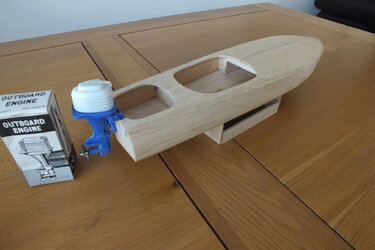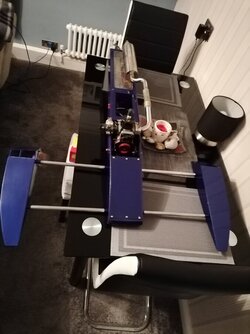So I've still been pottering away at these planes. With most of the major sub structures built the next step is covering them. The moment I have been quietly dreading, but nothing for it but to plunge straight on in. First up, was to cut a section of tissue and with a glue stick, then glue the part on to the tissue. I had to be careful to only glue the edges of the part, or else the tissue wouldn't shrink properly later on.
I thin trimmed the tissue to within a millimeter of the wood and then using a 50/50 wood glue/water mix, I gently painted the edge of the tissue and folded it over the edge of the part.
With drying time as well, this has been a long process, to cut, trim and apply all of the tissue. I then decided to move on and attempt to shrink the tissue and for the first attempt I decided to try the rear tailplane, not my brightest idea. I've subsequently discovered that they are amongst the hardest components to shrink properly because of their light structure it hard to stop them warping. Yep I created a Pringle! To be fair there were a also a number of issues in my technique and equipment, so it was of to do some research.
I then stumbled on to a website which advocated the spice pot method, which looked interesting and more likely to create a straight outcome. So with some trepidation, after a dry run, I sprayed one of the wings with water and set it down under the spice jars.
Several hours later, I was over the moon to see a tightly shrunk and warp free wing emerge from under the spice pots.
I've also covered the fuselage, as much as needed at this stage, so I just need to shrink and dope the rest of the main components, then a myriad of small components need finishing before assembly can start. I might have mentioned at the start, I can be a little slow with these things!


![20220206_162110[1].jpg](/data/attachments/629/629685-9406854567cff5441dc6a1334a97acc6.jpg)

 Will post another pic later.
Will post another pic later.
 , did you pre shrink with some water first?
, did you pre shrink with some water first?